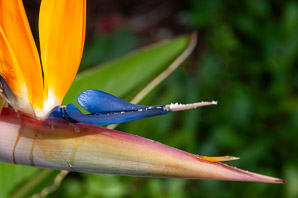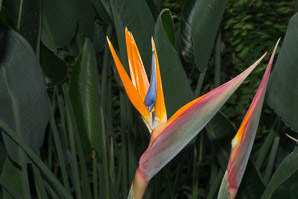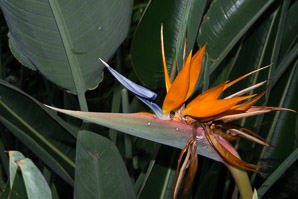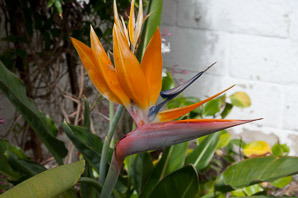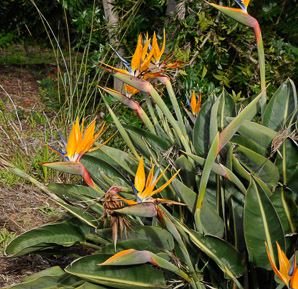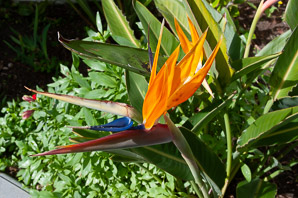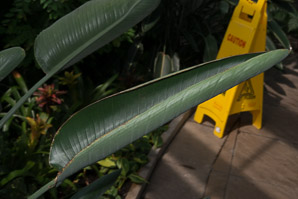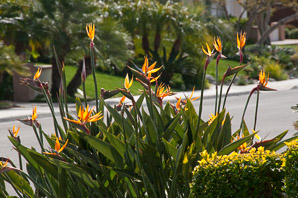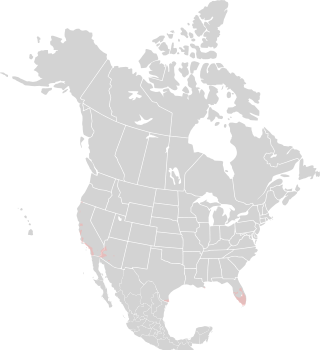
|
Strelitzia reginae Aiton Bird of paradise, bird-of-paradise, crane flower
These beautiful but bizarre plants are native to South Africa, from Cape Province to KwaZulu-Natal. They are not found in the wild in North America. It was introduced to central and tropical South America, where it is cultivated as a popular garden plant. There is a reason for the strange shape. Bird-of-paradise is pollinated by birds, which land on the spathe and flower. This causes the stamens to protrude and paint pollen on the birds. Identification: Plants are 3-6½′ (1-2 m) tall, stemless, forming clumps. Leaves are oblong or lanceolate, 9-30″ (22-75 cm) × 1¾-6″ (5-15 cm), bluish- or grayish-green, leathery, arranged in fan-like groups. They appear on long petioles up to 3′ (1 m) in length. Flowerheads are on erect stocks above the leaves, with a horizontal bract up to 9″ (22 cm) long that looks like a crane's bill. Several orange flowers open one at a time from May to December; flowers are 3½-6″ (9-15 cm) across. In addition to the orange portion there are a set of inner fused petals that are deep blue in color. They fuse into a sharp point, a nectar dispenser. Seeds are round, black to brown, with a little yellow tuft of hairs. The overall effect is unmistakable: that of a bird's head and beak. Online References:
References:
2/26/2010 · Bob & Celeste’s, Carlsbad, California · ≈ 4½ × 3″ (11 × 7.5 cm) 8/31/2013 · Lewis Ginter Botanical Garden, Richmond, Virginia · ≈ 15 × 10″ (37 × 25 cm) 8/31/2013 · Lewis Ginter Botanical Garden, Richmond, Virginia · ≈ 12 × 8″ (31 × 21 cm)
Strelitzia reginae description by Thomas H. Kent, last updated 25 May 2020. © FloraFinder.org. All rights reserved. |
2/24/2010 · Bob & Celeste’s, Carlsbad, California · ≈ 13 × 9″ (33 × 22 cm) 2/24/2010 · San Diego (Quail) Botanic Garden, Encinitas, California 2/26/2010 · Bob & Celeste’s, Carlsbad, California · ≈ 18 × 12″ (45 × 30 cm) 8/31/2013 · Lewis Ginter Botanical Garden, Richmond, Virginia · ≈ 1½ × 1′ (47 × 31 cm) 2/24/2010 · Bob & Celeste’s, Carlsbad, California Range: Zones 10-12:
|
